The ideal temperature to set a thermostat in winter is a source of arguments in homes around the world. While some people like to feel warm and cozy at home, others would prefer to put on a sweater and save money on the gas or electricity bills.
Studies have shown that women in particular are more sensitive to temperature and tend to prefer higher room temperatures than men. So, what temperature should your home be in the winter?
In this guide, we look at the average temperature indoors in the winter as well as advising you what the best temperature is for a balance of comfort and energy saving.
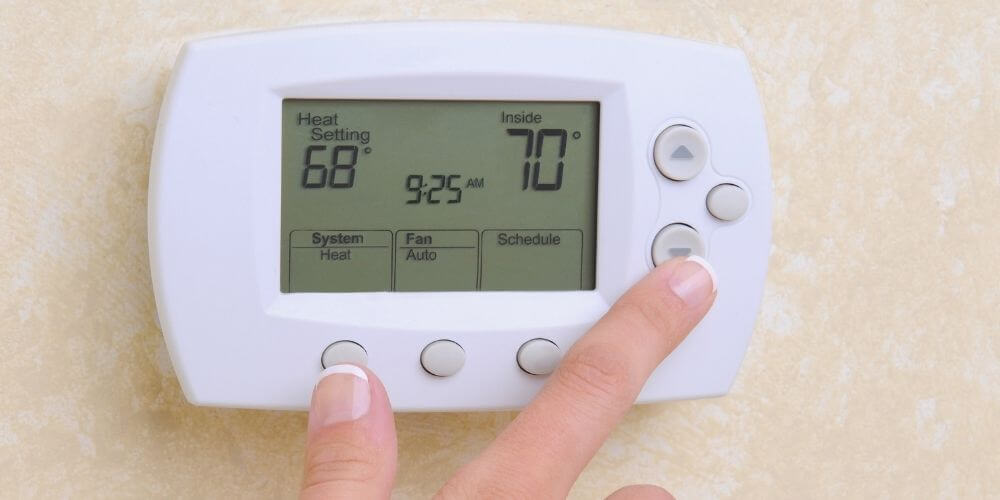
What is a reasonable temperature for a house in winter?
The average room temperature varies depending on the season, the time of day, and where in the world you are. The greater the difference between the indoor and outdoor temperature, the more energy will be needed to control the temperature in your home.
In the United States in winter, the average daytime room temperature is typically around 68°F (20°C). But a reasonable temperature can be anywhere from 64-75°F (18-24°C) in the daytime and 60-68°F (15-19°C) at night.
If you block all drafts, wear warm clothing, and cover yourself with a blanket, then a daytime temperature of 64°F should be sufficient. Likewise, if you are being active, such as doing chores, then this temperature should feel plenty warm enough.
However, if you prefer to wear light clothing and are relatively inactive, then you’ll likely prefer a warmer temperature.
The World Health Organization recommends that infants, elderly people, or those in poor health should have a room temperature of no less than 68°F (20°C).
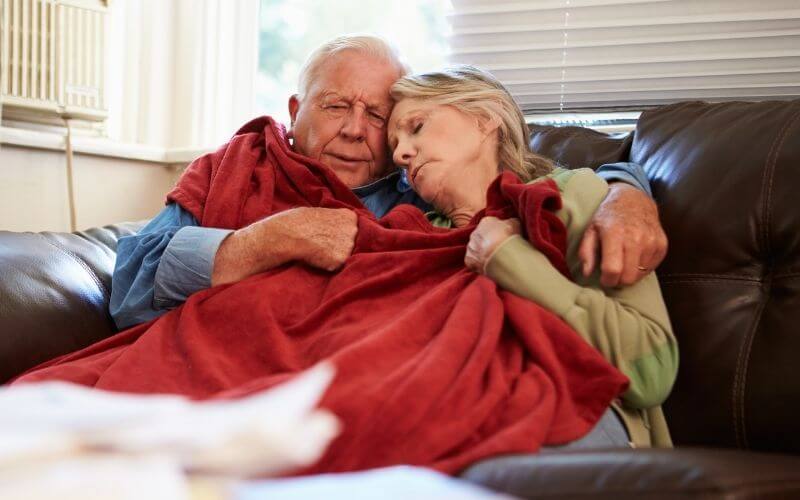
What temperature should you keep your house in winter?
Now that we know that the average house temperature in winter is between 64-75°F (18-24°C), let’s consider what the best temperature is, depending on your circumstances.
When considering the ideal temperature to set your thermostat in the winter, you’ll want to consider the following factors:
- Are you home? – It makes sense to have a lower temperature if nobody is home
- Are you awake? – People are usually more comfortable with a lower temperature at night
- How active are you? – Are you sittig still or moving around?
- Who is in the house? – Very young and very old people need a higher temperature
- What are you wearing? – Can you add another layer or some warm slippers?
- Is the house drafty? – Drafts can make a room feel colder than it really is
- Can you afford the bills? – Is paying your energy bills a source of worry for you?
So, what should you set the thermostat to in the winter?
For most people, the best temperature to set your thermostat to in the winter is 68°F (20°C) in the daytime and 65°F (18°C) at night.
It’s good to have a slightly cooler temperature at night than in the daytime because our body temperature naturally drops when we’re asleep. Our bodies are designed to sleep in cooler environments.
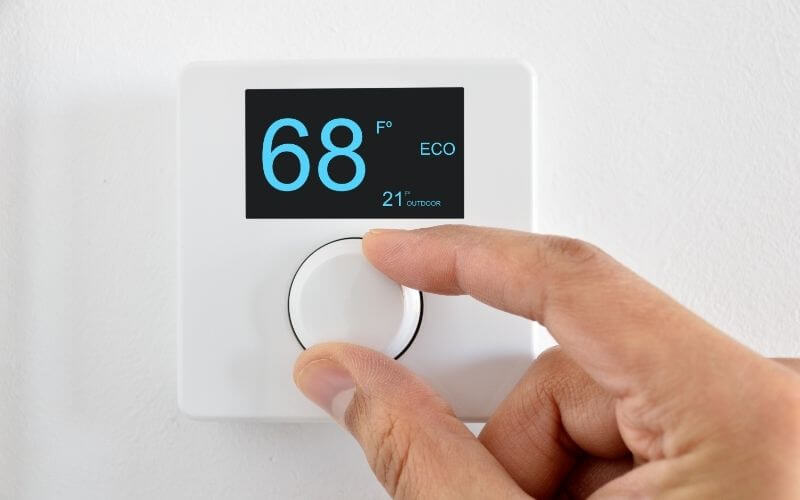
What happens if your home is too warm in the winter?
The health risks from being in a home that’s too hot generally occur in the summer. In the winter, it’s easy to reduce the temperature of a room that’s uncomfortably hot by turning off the heating and opening a window.
The main downside to setting your thermostat too high in the winter is the increased use of energy; whether that be gas, electricity, wood, or another fuel source.
Using more energy than we need is not only costly in terms of increased energy bills, but it has grave environmental impacts too. Overusing energy will lead to an increased carbon footprint, more greenhouse gas emissions, air pollution, faster climate change, and ultimately, more extreme weather events.
If your solution to a home that’s too warm in the winter is to open windows, then you are quite literally wasting energy. It’s always better to turn down the heating or refrain from turning it up so high in the first place.
In areas with heavy population densities, the price you pay for home energy is driven by supply and demand. Your overuse will contribute to scarcity in the energy supply and lead to higher costs for everyone. This is particularly unfair on people in fuel poverty who may regularly have to choose between heating and eating during the winter months.
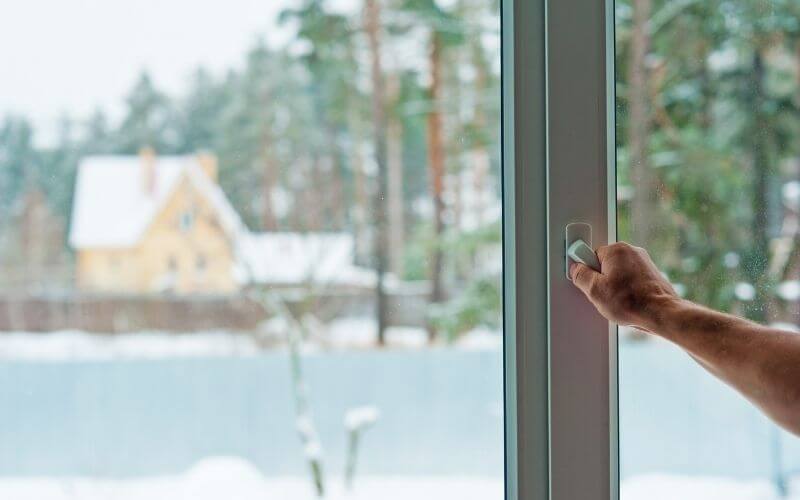
What happens if your home is too cold in the winter?
If you spend long periods of time in a room that’s below 65°F (18°C) without sufficient extra clothing or blankets, negative health effects may occur. Prolonged exposure to cold temperatures can cause increases in blood pressure and an increased risk of blood clots which can lead to strokes and heart attacks.
Cold weather also includes the risk of respiratory illnesses such as colds, flu, and acute bronchitis.
In the UK, doctors’ consultations for respiratory illness in older people increase by as much as 19% for every degree the outdoor temperature drops below 5°C. [Source]
The people most at risk of being in a home that’s too cold in the winter are those over the age of 65, babies under a year old, and people who are in poor health. These people tend to move around less and so require more heating to maintain their body temperatures.

How to heat a home for less
If you struggle to pay your energy bills, then heating your home can be a source of great concern. But you’re certainly not alone. In 2015, the US Energy Information Administration (EIA) estimated that 17 million households received an energy disconnect/delivery stop notice and 25 million households had to forgo food and medicine to pay energy bills.
Those on low incomes, living in colder climates, who rent their homes are most likely to be ‘energy poor’. While in countries such as the UK, there are national strategies to help people who cannot afford to heat their homes, the United States does not currently have any federal statutes to measure and respond to energy poverty.
Therefore, it is down to each adult to come up with their own strategies to make heating more affordable.
Some of the easiest ways to heat your home on a budget include:
- Investing in an energy-efficient space heater to only heat the room you’re using
- Opening curtains in the daytime and closing them at night
- Use a timer to turn on your heating 30 minutes before you get up at a low temperature
- Move furniture away from wall registers or radiators
- Never setting your thermostat to more than 65°F (18°C)
- Turn hour heating down to 60°F (15°C) at night
- Wear more clothes and using a blanket when sitting down
Suggested read: Which Type Of Heater Is The Cheapest To Run?
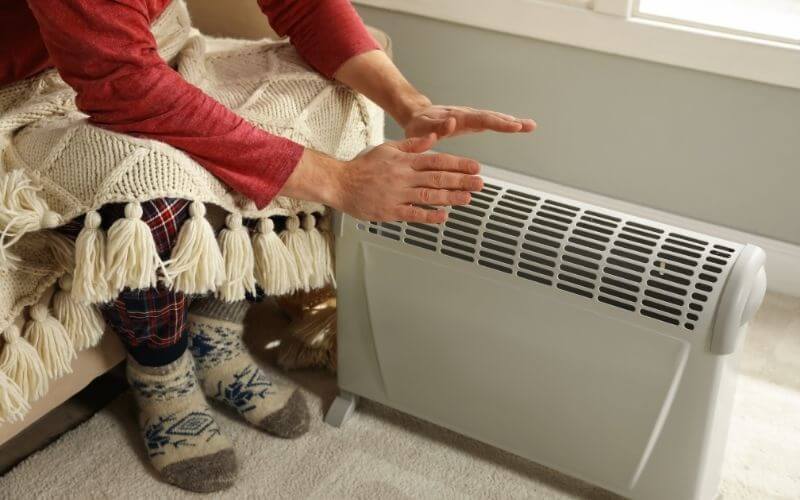
What temperature to leave an empty house in the winter?
When your home is empty, it makes sense that it can be colder than it would be when it’s occupied. Whether your home is empty for eight to ten hours while you’re at work in the day, for a week or two while you go on vacation, or even for the whole winter if it’s a rental property then you should think about the ideal temperature to leave it at.
To work out the best temperature to leave an empty house in the winter, you’ll need to consider what’s in the house…
- Houses with pets shouldn’t be below 64°F (18°C)
- Some houseplants require temperatures of at least 60°F (15°C) to survive
- To prevent pipes from freezing the temperature should be at least 55°F (13°C)
You should never let the temperature of an empty house drop below 50°F (10°C) as this is likely to cause water pipes to freeze and crack. The best temperature to set your thermostat when you go on vacation is 55°F (13°C).
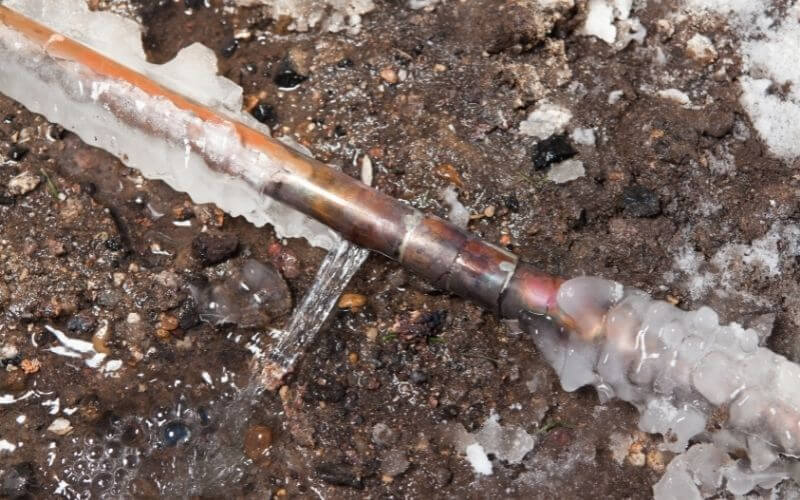
Is it bad to leave a house unheated in the winter?
You shouldn’t leave an empty house unheated in the winter as this can cause serious damage that can be costly to repair. Heating your empty home will cost money, but this will always be cheaper than repairing cracked pipes or flood damage.
If it’s not possible to heat a house, perhaps because it is undergoing a renovation, then you can take the following steps to help prevent pipes from freezing:
- Insulate exposed pipes in the attic and crawl spaces
- Seal leaks that allow cold air inside using insulation or caulk
- Disconnect garden hoses and, if possible, use an indoor valve to shut off and drain water from outdoor pipes
- Let a drip of water continuously run out of each tap
- Open cabinet doors to allow heat to get to uninsulated pipes near exterior walls
Winter Home Temperature FAQs
75°F is at the top end of the range of comfortable temperatures for your home in winter. If you’re wearing a sweater, you may find that this is too warm.
Many people find 74°F to be too warm for a house in winter, particularly if wearing sweaters and slippers. While it’s okay to have your thermostat set to 74°F in the daytime, you can save money on your energy bills by nudging it down to the recommended 68°F.
Just because your thermostat is set to 73, that doesn’t mean that your home is actually 73°F. Some rooms may be colder, particularly if you have drafts that let cold air leak inside or if your heating system is in need of maintenance.
While some people like to heat their homes to 72°F in the winter, for most people this is a little too high. By setting your thermostat to the average of 68°F and adding an extra layer of clothing you could reduce your energy bills and help the environment.
70 is a reasonable setting for a thermostat in the winter. However, if you were to reduce it to 68 then this could save you around 6% on your heating bills without the difference in temperature being noticeable.
68°F is the ideal indoor temperature for a house. You may choose to have your home a little cooler than this in the winter and a little warmer in the summer to reduce your heating and cooling bills.
67°F isn’t too cold for a house. In fact, the average room temperature is 64-75°F in the daytime and 60-68°F at night. If you feel cold you could add more clothing, use a blanket or invest in a small electric heater.
65°F is a little colder than average for a house in the daytime, but this temperature falls within the acceptable range for healthy adults and children. Babies, the elderly, and sick people will prefer the temperature to be closer to 68°F.
62°F is too cold for a house in the daytime, although this temperature is perfectly acceptable at night when you’re asleep. Heating your home to at least 64°F in the daytime can prevent health problems such as high blood pressure and respiratory illnesses.
